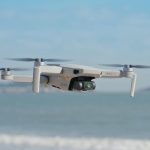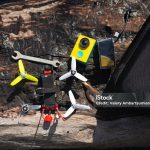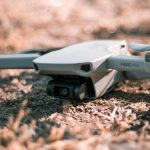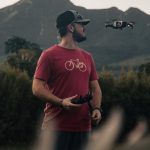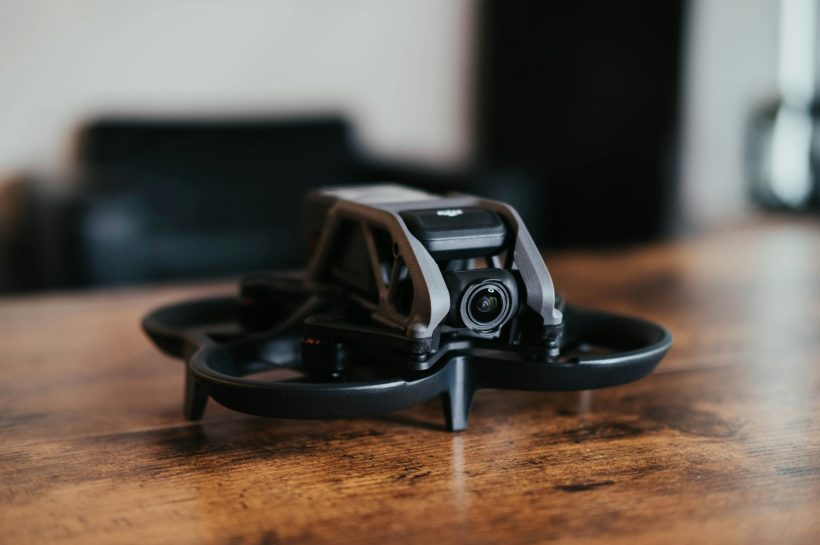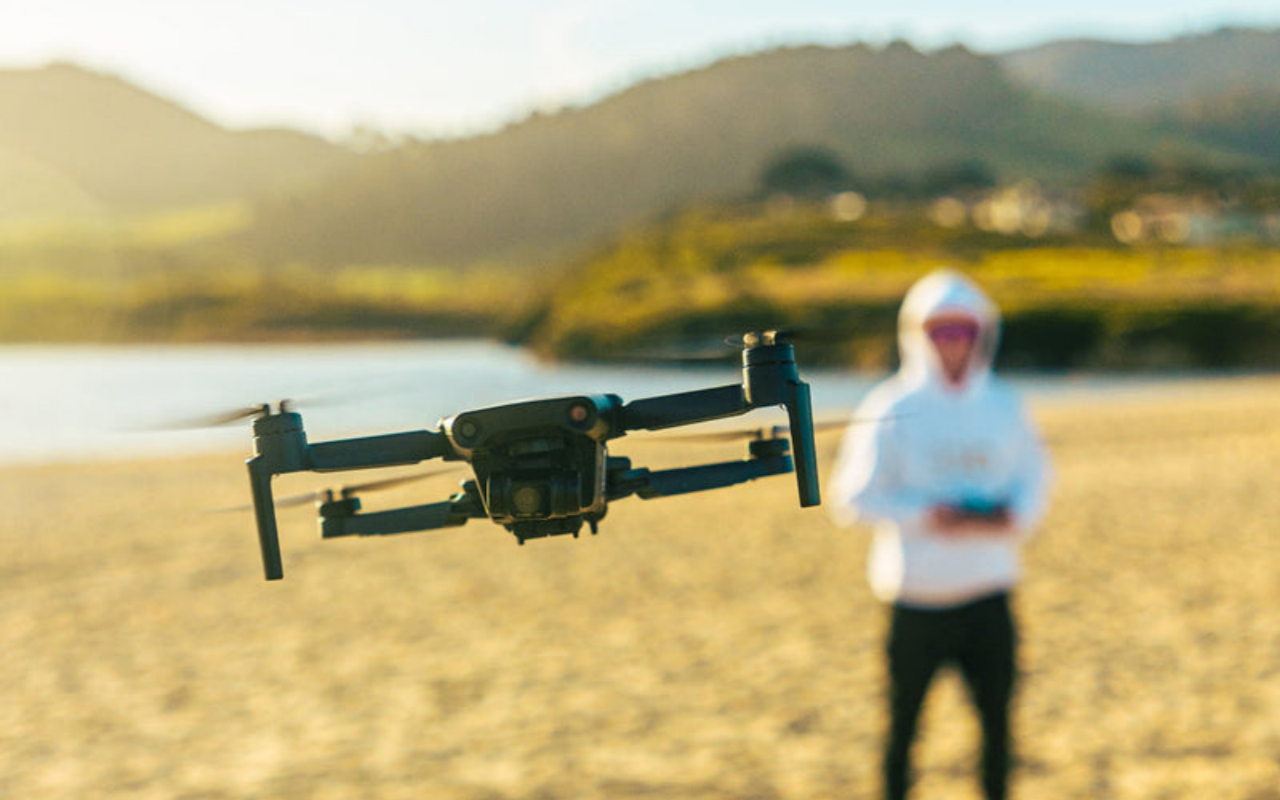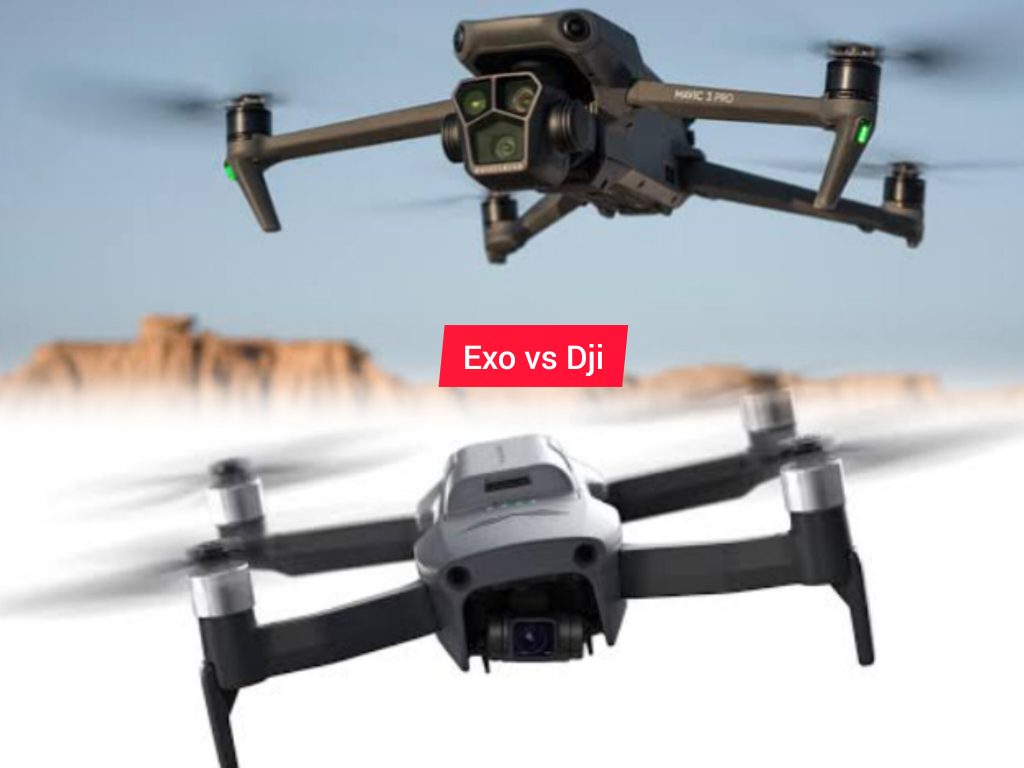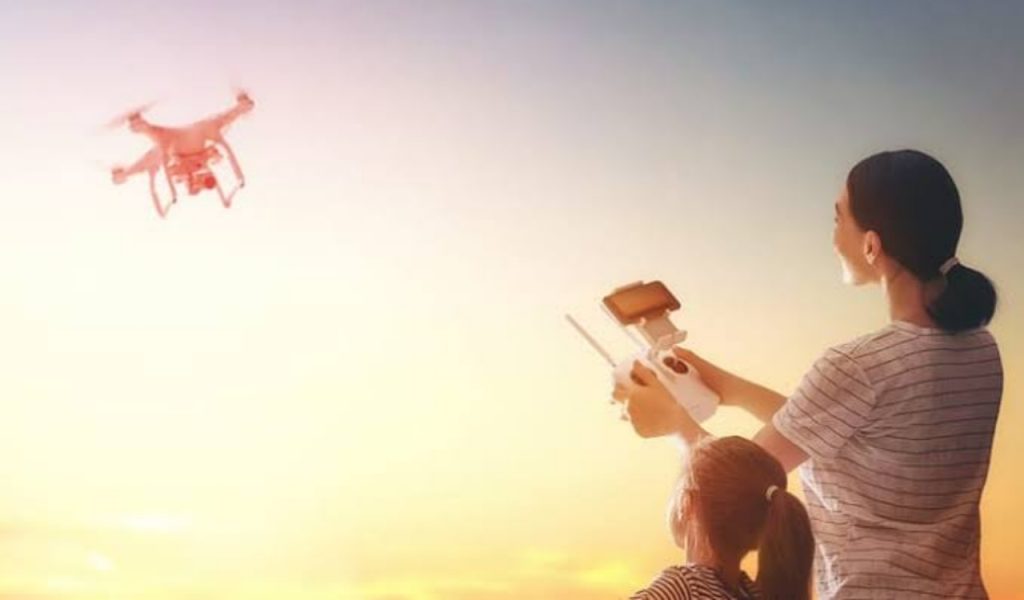Drone photography is one of the most exciting and innovative forms of photography today. With a drone, you can capture stunning aerial views of landscapes, cityscapes, and events that would be impossible to achieve with traditional photography. However, for many people, the idea of using a drone can be intimidating and overwhelming. That’s why we’re here to help. In this post, we will provide you with five easy steps to master drone photography and take your photography skills to new heights. We will cover everything from choosing the right drone and camera settings to mastering the techniques of aerial composition and flight. By the end of this post, you’ll be ready to take breathtaking photos from above and be the envy of all your friends and family.
Introduction to drone photography
Drone photography has revolutionized the way we capture images, offering a unique perspective that was once only possible with expensive equipment or from a helicopter. With the advancement of technology, drones have become more accessible to enthusiasts and professionals alike, allowing them to capture stunning aerial shots with ease.
One of the key advantages of drone photography is the ability to capture breathtaking landscapes, cityscapes, and events from a bird’s eye view. This perspective adds a new dimension to photography, allowing photographers to showcase their creativity and capture images that were previously out of reach.
In this introductory section, we will explore the basics of drone photography, including the equipment needed, safety considerations, and tips for mastering this exciting form of photography. Whether you are a beginner looking to explore a new hobby or a seasoned photographer wanting to take your skills to new heights, drone photography offers endless possibilities for creativity and expression.
Step 1: Choosing the right drone for photography
Choosing the right drone for photography is a crucial first step in mastering the art of drone photography. With the market flooded with various models and features, it can be overwhelming to pick the perfect drone for your needs.
When selecting a drone for photography, consider factors such as camera quality, flight time, stability, and ease of use. A drone with a high-resolution camera, such as 4K capabilities, will ensure you capture stunning aerial shots with clarity and detail.
Flight time is also important, as longer flight times allow for more opportunities to capture the perfect shot without constantly needing to recharge or switch batteries. Stability is key for smooth and steady footage, especially in windy conditions.
Ease of use is another critical aspect to consider, especially for beginners. Opt for a drone that is user-friendly and comes with features like GPS stabilization and obstacle avoidance to help you navigate and capture shots with ease.
Ultimately, choosing the right drone that aligns with your photography goals and skill level will set you on the path to mastering drone photography and capturing breathtaking aerial images.
Step 2: Understanding drone photography techniques
Before taking your drone to the skies, it’s essential to grasp the key techniques that will elevate your photography game. Drone photography opens up a whole new world of creative possibilities, but mastering the basics is crucial for capturing stunning aerial shots.
First and foremost, familiarize yourself with the controls of your drone to ensure smooth and steady flight. Practice flying in different conditions to build confidence and precision in maneuvering your drone. Understanding how to adjust altitude, speed, and orientation will allow you to frame your shots effectively and capture dynamic perspectives.
Next, explore the various camera settings available on your drone, such as shutter speed, ISO, and white balance. Adjusting these settings can significantly impact the quality of your photos, so take the time to experiment and find the optimal configurations for different lighting conditions and subjects.
Composition is key in drone photography, as the aerial perspective offers unique opportunities for creating captivating images. Pay attention to elements such as symmetry, leading lines, and patterns to compose visually striking shots. Experiment with different angles and viewpoints to add depth and interest to your photos.
Lastly, don’t forget about post-processing. Editing your drone photos can help enhance colors, contrast, and clarity, transforming good shots into extraordinary ones. Familiarize yourself with editing software and techniques to refine your images and bring out their full potential.
By understanding and mastering these drone photography techniques, you’ll be well-equipped to soar to new heights and capture breathtaking aerial images with your drone.
Step 3: Mastering drone flight control
Mastering drone flight control is a crucial step in becoming a skilled drone photographer. Before you take to the skies, it’s essential to familiarize yourself with your drone’s controls and settings. Start by practicing basic maneuvers such as ascending, descending, and hovering in a controlled manner.
Once you are comfortable with the basic controls, challenge yourself with more advanced maneuvers like flying in different directions, performing smooth turns, and mastering altitude changes. Remember to always keep a safe distance from obstacles and follow local drone regulations to ensure a safe and successful flight.
To enhance your skills further, consider investing in a flight simulator or practicing in open spaces with minimal distractions. The more you practice, the more confident you will become in controlling your drone, allowing you to capture stunning aerial shots with precision and ease. Mastering drone flight control is the key to unlocking the full potential of drone photography and taking your skills to new heights.
Step 4: Capturing stunning aerial shots
Capturing stunning aerial shots is the pinnacle of drone photography. Once you have mastered the basics of flying your drone and understanding the camera settings, it’s time to take your photography to new heights—literally!
When capturing aerial shots, it’s essential to plan your shots beforehand. Consider the composition, lighting conditions, and the story you want to convey through your photographs. Aerial photography offers a unique perspective, allowing you to showcase landscapes, architecture, and events from a bird’s eye view.
Experiment with different angles and heights to create dynamic and visually compelling shots. Use leading lines, patterns, and textures to add interest to your photographs. Don’t be afraid to get creative and think outside the box when framing your shots.
Keep an eye on the weather conditions before setting out to capture aerial shots. Clear skies, soft lighting, and minimal wind will help you achieve the best results. Remember to comply with local regulations and fly your drone responsibly to ensure the safety of yourself and others.
With practice and patience, you’ll be able to capture stunning aerial shots that will wow your audience and elevate your drone photography skills to new heights.
Step 5: Editing and enhancing your drone photos
Editing and enhancing your drone photos is the final step in perfecting your aerial photography masterpieces. Once you have captured stunning images from above, it’s time to bring them to life through post-processing techniques. Editing allows you to fine-tune your photos, correct any imperfections, and enhance the overall quality of your aerial shots.
One of the key aspects of editing drone photos is maintaining a balance between enhancing the image and preserving its natural beauty. Avoid going overboard with filters and effects that can make your photos look artificial. Instead, focus on enhancing the colors, contrast, and sharpness to create a visually appealing composition.
Utilizing photo editing software such as Adobe Lightroom or Photoshop can greatly enhance your drone photos. These tools offer a wide range of editing capabilities, including adjusting exposure, cropping, straightening horizons, removing distractions, and adding creative effects.
Experiment with different editing techniques to find a style that suits your vision and enhances the mood of your aerial shots. Whether you prefer vibrant and colorful landscapes or moody and dramatic scenes, editing allows you to express your creativity and take your drone photography to new heights.
Remember, editing is a subjective process, and there are no strict rules when it comes to enhancing your drone photos. Trust your artistic instincts, practice regularly, and enjoy the creative journey of transforming your aerial captures into captivating works of art.
Bonus tips for drone photography success
To elevate your drone photography game even further, consider these bonus tips for success. Firstly, take advantage of golden hour lighting for stunning and warm aerial shots. The soft, diffused light during sunrise and sunset can add a magical quality to your images, enhancing colors and textures.
Next, experiment with different perspectives and angles to create visually dynamic compositions. Play with height, distance, and framing to capture unique and captivating shots that stand out.
Additionally, consider incorporating leading lines into your drone photos to draw the viewer’s eye into the scene and create a sense of depth and movement. Roads, rivers, or even natural formations can serve as effective leading lines, guiding the viewer through the image.
Furthermore, don’t forget about post-processing. Editing your drone photos can help fine-tune colors, contrast, and sharpness to achieve a polished and professional look. Experiment with editing software to enhance your images and make them truly pop.
Lastly, always prioritize safety when flying your drone. Familiarize yourself with local regulations, fly in safe and open areas, and be mindful of your surroundings to ensure a successful and incident-free drone photography session. By following these bonus tips, you can take your drone photography skills to new heights and capture breathtaking aerial images.
Inspiring examples of drone photography
Imagery captured through drone photography has revolutionized the way we view the world from above. The possibilities seem endless, as drones offer a unique perspective that was once limited to expensive helicopter rides or inaccessible viewpoints. From sweeping landscapes to intricate urban skylines, drone photography has opened up a whole new realm of creativity for photographers.
One inspiring example of drone photography is the breathtaking aerial shots of natural wonders such as majestic waterfalls, winding rivers, and lush forests. These images capture the beauty and grandeur of Mother Nature in a way that is both awe-inspiring and humbling.
Another striking use of drone photography is in capturing urban landscapes from above. The intricate patterns of city streets, the geometric shapes of buildings, and the interplay of light and shadow create mesmerizing images that showcase the beauty of human-made structures from a bird’s eye view.
Furthermore, drone photography has been used to document events and gatherings in a way that was previously impossible. Whether it’s a wedding, a music festival, or a sporting event, drone photography offers a unique perspective that adds a new dimension to the visual storytelling of these occasions.
These inspiring examples of drone photography demonstrate the endless creative possibilities that this medium offers. By mastering the art of drone photography, photographers can soar to new heights and capture the world from a perspective that is both captivating and transformative.
Safety tips for flying drones
Safety should always be the top priority when it comes to flying drones. Here are some essential tips to ensure a safe and enjoyable experience:
1. Know the rules and regulations: Familiarize yourself with the local drone laws and regulations in your area. Make sure you are aware of any restrictions on where you can fly your drone and always follow the guidelines set by aviation authorities.
2. Choose the right flying location:
Select a safe and open area to fly your drone, away from people, buildings, and other obstacles. Avoid flying near airports, crowded spaces, or restricted airspace.
3. Perform a pre-flight check: Before takeoff, conduct a thorough inspection of your drone to ensure that all components are in good working condition. Check the battery level, propellers, and any other parts that could affect the flight.
4. Maintain line of sight: Keep your drone within your line of sight at all times to maintain control and avoid collisions with other objects. Avoid flying too far or too high where you might lose visibility of the drone.
5. Be mindful of weather conditions: Avoid flying in adverse weather conditions such as strong winds, rain, or storms, as these can affect the stability and performance of your drone. Always check the weather forecast before taking off.
By following these safety tips, you can enjoy a safe and successful drone photography experience while minimizing the risk of accidents or incidents.
Conclusion: Taking your drone photography skills to new heights
As we reach the conclusion of this guide on mastering drone photography, it’s essential to reflect on the incredible journey you have embarked on. By following the five easy steps outlined in this blog post, you are well on your way to soaring to new heights in your aerial photography endeavors.
Remember, practice makes perfect. The more you fly your drone and experiment with different techniques, the more confident and skilled you will become in capturing stunning aerial shots. Don’t be afraid to push the boundaries of your creativity and explore unique perspectives that only a drone can offer.
Furthermore, always prioritize safety when flying your drone. Familiarize yourself with local regulations, airspace restrictions, and weather conditions to ensure a safe and enjoyable flying experience. Additionally, invest in quality equipment and accessories to enhance the performance of your drone and elevate the quality of your photographs.
In conclusion, mastering drone photography is a rewarding journey that requires dedication, creativity, and a passion for capturing breathtaking aerial imagery. With the knowledge and skills acquired from this guide, you are equipped to take your drone photography skills to new heights and unlock a world of endless possibilities in the realm of aerial photography. Fly high, explore new horizons, and let your creativity soar with drone photography!
We hope you found our blog post on mastering drone photography in 5 easy steps both informative and inspiring. By following the tips and techniques outlined in this guide, you can elevate your photography skills to new heights and capture stunning aerial images. Remember, practice makes perfect, so don’t be afraid to experiment and push the boundaries of your creativity. We can’t wait to see the breathtaking shots you capture using your drone! Happy flying and happy shooting!
